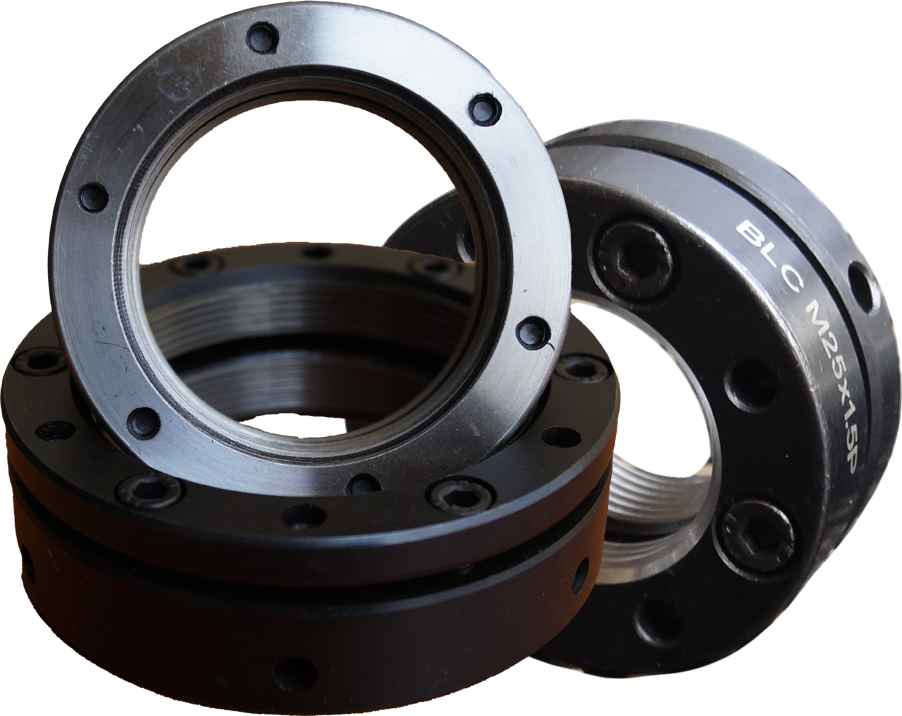When it comes to machines, the importance of ensuring their efficiency and consistency of operation cannot be overstated. One of the components that can contribute to this is the locknut. Locknuts are used to secure bearings, gears, and other power transmission products to shafts and spindles with a high degree of stiffness.
However, traditional industrial lock nuts with washers are not suitable for super-precise machine bearings because they have relatively large manufacturing tolerances. This is where precision locknuts come into play.
Precision locknuts are designed to adjust, preload, and secure bearings, gears, and other power transmission products with a high degree of accuracy. They are made to correspond with standard bearing sizes and are sometimes called bearing locknuts. These locknuts are typically used in CNC lathe machines, CNC grinding machines, and other similar machines.
The process of manufacturing precision locknuts involves several steps. First, the lock nut raw material is cut down to size. Then, CNC and VMC machining operations are performed to shape the locknut to its desired form. After that, the machined workpiece is taken out for the treatment process to prevent it from corrosion. Once the treatment process is complete, Allen bolts are placed in holes and fitted to give the locknuts their desired locking capabilities.
To ensure the quality of the precision locknuts, runout testing, visual inspections, roughness testing, and hardness testing are performed. Only the lock nuts that pass all of these test criteria are packed in anti-corrosive packing boxes and made available for use.
Precision locknuts are available in various locking methods, including set screws, clamping screws, shoes, and resilient rings. The set screws are typically located on the face or periphery of the locknut, and they are used to lock the female threads of the locknut to the male threads of the shaft. By tightening the set screws, the thread clearance of the locknut is eliminated, ensuring a tight fit.
One example of precision locknuts is the BLC series, which is a Clasp-Locking nut and features an elastomer steel body, axial locking, and forced locking. This series provides a three-fold increase in locking capability over traditional locknuts, making it ideal for harsh working environments where locknuts are easily loosened.
Another example is the BLR series, which uses a radial locking arrangement through a mechanism of screw tightening. This series employs 2-way, 3-way, or 4-way radial locking and is ideally suited for applications where locknut space is limited.
Finally, the BLF series uses a locking method that involves tightening screws at a 30-degree angle to the threads. This design allows the threads of the fixed copper to mesh perfectly with the counter-threads, resulting in a perfect effect of let-off. The 30-degree locknut design also reduces the torque resulting from tightening a screw.
Choosing high-quality precision locknuts is crucial for ensuring the efficiency and consistency of machine operation. By understanding the different types of precision locknuts and their locking methods, you can make an informed decision when selecting the right lock nut for your machine.
One important aspect to consider when selecting a precision locknut is the level of precision required for the application. Depending on the application, a locknut with a higher level of precision may be necessary to ensure optimal performance and longevity of the equipment. For example, in high-speed applications or those with high loads, a locknut with a higher level of precision may be necessary to prevent excessive wear or damage to the equipment.
Another important consideration when selecting a precision locknut is the material it is made from. The material of the locknut can have a significant impact on its performance and durability. Some materials commonly used for precision locknuts include stainless steel, carbon steel, and brass.
It’s also important to consider the installation process for precision locknuts. Proper installation is critical to ensure that the locknut performs as intended and provides the necessary level of preload or locking force. In some cases, specialized tools or equipment may be required to properly install the locknut.
Finally, it’s important to source precision locknuts from a reputable supplier that can provide high-quality products and reliable service. Working with a trusted supplier can help ensure that you receive precision locknuts that are designed and manufactured to meet your specific requirements and that are backed by responsive customer support.
In conclusion, precision locknuts are an essential component for many types of machinery and equipment, and choosing the right locknut for your application is critical to ensuring optimal performance and longevity. By considering factors such as precision level, material, installation process, and supplier reputation, you can select a precision locknut that meets your specific needs and helps you achieve reliable, efficient operation of your equipment.


